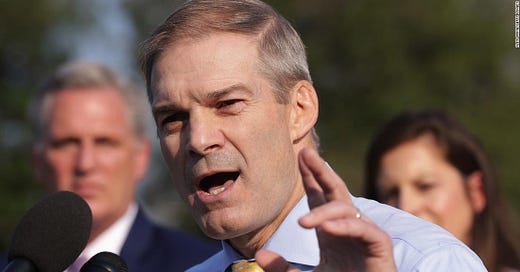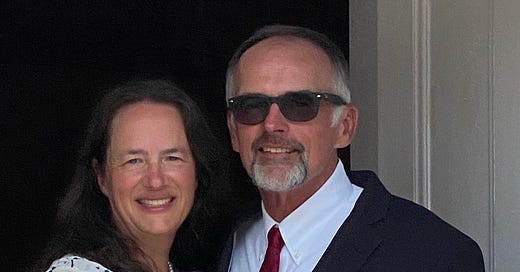
March 4, 2020
There is a lot of news about both the novel coronavirus and politics tonight, but I’m going to let it rest so I can address the concern that has been popping up in my email and messages all day. People are concerned that there has been some sort of a corrupt bargain between the “Democratic establishment”—possibly even including former President Barack Obama-- and retiring presidential candidates Pete Buttigieg and Amy Klobuchar to throw the Democratic nomination to former Vice President Joe Biden in order to thwart the popular will to nominate Vermont Senator Bernie Sanders.
First of all, the nomination process is not over, and there is not currently a winner. Second, the nomination has not been rigged. This is a deeply problematic construction at a time when our actual elections really ARE in danger; it is also an argument pushed by Russian disinformation to undermine faith in democracy.
Here’s how the Democratic nomination process currently works. (I am not going to talk here about the Republican system—I’ve talked about it before—but it permits less input from voters than the Democratic system.)
First of all, neither the Republican Party nor the Democratic Party, nor any other party, is a government institution. While they have to abide by our laws, they make their own rules, and a LOT of jockeying goes into the writing of those rules. (FWIW, Sanders is the only candidate running who had a hand in writing the current Democratic National Committee rules. Three of his top advisors were on the commission that wrote the current rules, and he chose four others.)
The process is crazy-complicated, but it makes more sense if you know some of the history behind it. Democratic presidential candidates used to be chosen by party leaders, behind closed doors. That exploded in 1968, when Vice President Hubert Humphrey won the nomination without winning any primaries as a solo act— he had been running as President Lyndon Johnson’s vice president when Johnson abruptly withdrew from the race too late for Humphrey to enter the primaries. Humphrey was associated with the ”establishment” and the war in Vietnam (although he was eager to end it), at a time when leaders were increasingly suspect and 80% of voters in the Democratic primaries had voted for anti-war candidates (including Senator Robert F. Kennedy, who was making a strong play for the nomination when he was murdered). So when he won the nomination over anti-war candidates, demonstrators began to protest and the police counter-rioted. The convention turned into violent chaos. And, of course, Humphrey lost the election to Richard M. Nixon, who dramatically escalated the war in Vietnam, (among other things!).
After the 1968 debacle, DNC leaders commissioned a 28-person panel overseen first by South Dakota Senator George McGovern and then, when he resigned to run for president himself, Minnesota Representative Donald M. Fraser, to figure out how to get more people involved in the nomination process. The result was the state primary, which has now replaced caucuses in all but three states (and three territories), by my count. In primaries, voters cast ballots for their choice for the nomination, who then gets allotted delegates to the convention. With luck, there will be a clear winner, but if not, the convention delegates will wheel and deal to decide who should win the nomination. The commission also reduced the roles of party leaders in the nominating process, and required better representation for minorities, women, and young people.
These rules governed the 1972 convention, which gave the presidential nomination to McGovern himself, who was enormously popular with young people and those opposed to Nixon’s escalation of the Vietnam War, but much less so with the traditional Democrats (especially workers) who had lost representation at the convention under the new rules.
McGovern lost to Nixon in a landslide—the Electoral Count was 520 to 17, and McGovern didn’t even carry his home state. Then Democratic President Jimmy Carter lost his reelection bid by a similar landslide (the Electoral College split was 489 to 49). At that point, Democratic leaders decided the nomination process had swung too far away from professional politicians. They thought that primary voters, who tend to be much more extreme than those in the general election, were choosing unelectable candidates.
Another commission, this one of 70 people, met in 1981 and 1982, and added back into the nomination process the voices of state party chairs, the Democratic governors and members of Congress, former presidents and vice presidents, and certain DNC leaders. These are the so-called superdelegates, and they are not pledged to any candidate. The idea is that, having won or run elections, these people will have a sense of who can win at the national level and will provide a counterweight if primary voters choose someone unelectable. Originally, the superdelegates made up about 15% of the delegate count, but before the 2016 election they had crept up to about 20%.
Before the 2016 election, as Secretary of State Hillary Clinton and Sanders tussled to win the nomination, the DNC overwhelmingly voted to change the rules to compromise between the two camps. Under those rules, a new commission of 21 people, including 9 nominated by Clinton and 7 by Sanders, met in 2017. They reduced the percentage of superdelegates to about 15% again, and refused to let them vote on a first ballot, bringing them in only if the nomination is contested.
So back to the question of rigging. The Sanders camp wanted to get rid of the superdelegates altogether, believing it would help him win the 2020 nomination. But they had to compromise on keeping the superdelegates from voting on the first ballot, expecting that he could win quickly with a majority if the superdelegates stayed out of it. But now that it looks like he will likely not win outright, he will likely be sunk when the superdelegates are in play on a second ballot. So now he wants the nomination to go to someone with a plurality of delegates—that is, not a clear majority, but more than anyone else—on the first ballot. This would be highly unusual: brokered conventions used to be the norm, and they are a good way to unite the party behind a candidate.
But do members of the Democratic establishment—those who could be superdelegates—want Sanders as the nominee? Almost certainly not. They do not think he is electable. He is not popular with African American voters, who are a key part of the Democratic Party’s base, and he has a history that will play badly with moderate voters.
Are they right that he is unelectable? Before Tuesday, I was not at all certain of that. But Sanders’s big play for the nomination has been that he could bring new voters into the party by attracting young people. He certainly is popular with younger folks, but they did not turn up to vote for him on Tuesday, suggesting his key strength is not as strong as it seemed. Still, political prognostications at this stage of the game are a fool’s game. My opinion and $3 will get you a cup of coffee.
Did Buttigieg or Klobuchar cut a deal with Biden before endorsing him? Almost certainly. But that is not a corrupt deal; it’s how politics works. If they followed the norm, they will have gotten him to promise to make a priority in his administration (if he is elected) something they and their supporters care about. This is key to the other part of the nomination process that is going on now: hashing out the issues (they’re known as “planks”) that will be in the party’s platform, indicating its priorities. The jockeying going on now between voters and candidates and the party’s eventual leader is key to that construction.
This is why we go through this process, and why the president and the platform matters. We often forget that when we show up at the polls every four years to pick a president, we are not simply electing a charismatic leader, we are electing someone who can get legislation we care about passed by nailing together coalitions that will move the country in a direction we like. That is incredibly important, and it’s why working with experienced politicians matters.
But it is also important to put pressure on those leaders to move in directions we want. If your favorite candidate has left the race or looks to be pushed aside, it is more important than ever to continue to advocate for the causes (and people) you believe in, to keep those things front and center. That, too, is part of the political process. Most famously, in 1890, an upstart reform party took America by storm. It organized as the People’s Party in 1891 and demanded a slew of changes to take American finance and politics out of the hands of the very wealthy. The party largely fizzled out when the Democrats absorbed their ideas in 1896. Within twenty years, though, most of their reforms had become law.
——
Notes:
https://democrats.org/wp-content/uploads/2018/10/URC_Report_FINAL.pdf






